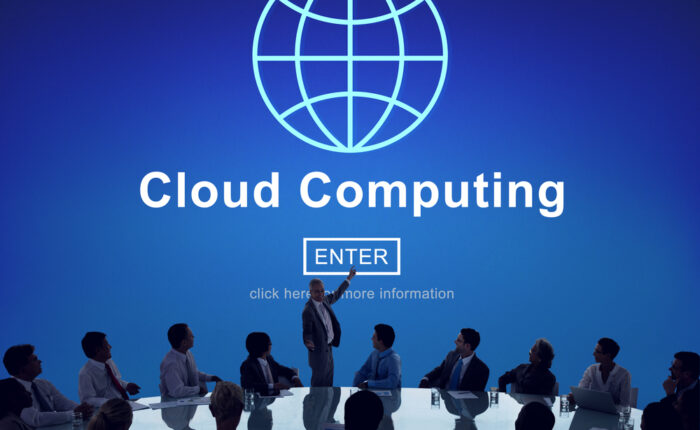For today’s mid-market C-level Executive (CFO, CIO, CTO), the decision to stay anchored to aging, inflexible on-premises infrastructure is no longer an act of risk avoidance; it is the single greatest inhibitor to growth and profitability.
The truth is, the most profound benefits of the cloud—from security and scalability to financial agility—are designed to solve the structural and budgetary challenges unique to the mid-market. Cloud migration is not merely a technical upgrade; it is a fundamental strategic shift that levels the competitive playing field.
The key to unlocking this potential is partnering with expert Cloud Migration Managed Services to define a clear, ROI-driven strategy.
The Cloud Migration Mandate for C-Level Executives
Mid-market leaders face a difficult paradox: they must deliver enterprise-level performance and security without enterprise-level resources. The “cost of inaction” on a proper cloud migration strategy now outweighs the perceived complexity of the shift.
For the CIO, it means constantly fighting fires related to server uptime and patching. For the CFO, it means unpredictable, sudden capital outlays.
The mandate is clear: You need cloud consulting services that translate technical modernization into measurable business results, focusing on the four critical areas where the mid-market gains the most significant, immediate advantage.
1. Financial Agility: Converting CapEx to OpEx
The financial model of on-premises IT infrastructure is inherently hostile to the agile budgeting required by a growth-oriented mid-market company.
Eliminating the Unpredictable CapEx Cycle
Traditional IT forces the CFO to earmark large chunks of capital for unavoidable, disruptive projects:
- Hardware Refreshes: Every 3-5 years, a massive capital expenditure (CapEx) for servers, storage arrays, and network hardware.
- Licensing Spikes: Unpredictable, multi-year licensing fees tied to hardware refreshes.
- Disaster Recovery (DR): Duplicating entire infrastructure off-site for redundancy, often costing millions and sitting idle.
Cloud migration services fundamentally restructure this liability. By moving to the cloud, you instantly eliminate the need for these massive upfront CapEx injections. The architecture switches entirely to a flexible, pay-as-you-go operational expenditure (OpEx) model. You only pay for the compute, storage, and database resources you actively consume.
The Mid-Market Advantage: Reclaiming Capital for Innovation
This shift offers profound relief to the finance team:
- Predictability: Cloud spend, when properly managed through cloud migration and management services, becomes a predictable, monthly operational cost.
- Cash Flow: Capital that was once tied up in a depreciating server room can be immediately redirected into core business functions—R&D, sales force expansion, or product development.
In essence, cloud adoption democratizes the high-end infrastructure only giants could once afford, giving the mid-market the financial agility to compete. If IT cost optimization strategy is a priority, the cloud must be your starting point.
2. Scalability and Flexibility: Instant Peak Performance
A mid-market company that is growing successfully is also a company that is constantly outgrowing its physical IT limits. Whether it’s a seasonal demand spike, a major contract win, or a sudden push for business intelligence reporting, on-premises infrastructure struggles to react quickly or cost-effectively.
The Elasticity Advantage: Scaling on Demand
The core benefit of the cloud is its elasticity. This is critical for the CIO tasked with maintaining uptime and performance:
- No Over-Provisioning: You stop paying for the “insurance” of idle hardware bought years ago just to handle a future peak load.
- No Under-Provisioning: You eliminate the risk of performance bottlenecks or system crashes during high-demand periods.
Crucially, the cloud allows for instant, on-demand scaling of compute, storage, and highly specialized database resources. If you experience an unexpected surge in transactions, the cloud dynamically adjusts your infrastructure, and Performance One ensures your databases keep pace without interruption. When the surge passes, the resources scale back down automatically to save costs.
The Mid-Market Advantage: Agility of a Startup, Power of an Enterprise
Mid-market businesses gain the ability to always meet performance demands during critical times (e.g., year-end financial reporting, holiday e-commerce sales, or major product launches) without suffering the drag of maintaining complex, physical infrastructure year-round.
This means you get the responsiveness and agility of a startup combined with the robust, global power of an enterprise environment. Strategic cloud consulting services are essential to design this elasticity correctly, ensuring it is both cost-efficient and secure.
3. Enterprise-Grade Security and Compliance: The IT Team Upgrade
Security remains the top-of-mind concern for every C-level executive. The mid-market IT director is usually tasked with managing security, disaster recovery, patching, and compliance alongside daily operations, creating an impossible burden that dramatically increases corporate risk.
Inheriting Billion-Dollar Security Infrastructure
When you partner with a major cloud provider (AWS, Azure, Google Cloud), you instantly inherit a share of their massive, multi-billion dollar investment in security:
- Physical Security: Data centers protected by state-of-the-art physical controls.
- Redundancy: Automatic data redundancy and disaster recovery (DR) capabilities that far exceed what any mid-market budget could replicate locally.
- Compliance: Native adherence to rigorous global compliance standards and certifications (e.g., HIPAA, SOC 2, ISO).
The Mid-Market Advantage: Strategic Focus, Not Firefighting
By moving to the cloud, you shift the responsibility of maintaining the core security infrastructure (the “security of the cloud”) to the provider. This is the essential IT team upgrade.
Your internal staff is freed from the low-value, time-consuming grind of server patching, hardware monitoring, and basic maintenance. Performance One, providing managed database services in the cloud, can then pivot your internal IT team toward higher-value, strategic tasks—like optimizing database performance, refining security policy, and implementing business intelligence initiatives. Your team transforms from a maintenance crew into a strategic asset.
4. Innovation and Competitive Edge: Access to Advanced Tools
For the CTO, cloud migration isn’t just about efficiency; it’s the gateway to innovation. The most disruptive technologies in the market—Artificial Intelligence (AI), Machine Learning (ML), and sophisticated Big Data analytics—are built in and optimized for the cloud. They are often too expensive, complex, or resource-intensive to install and maintain on an on-premises stack.
Democratizing AI, ML, and Advanced Analytics
A strategic cloud migration is the essential first step to accessing powerful, ready-to-use tools that can transform how your business operates:
- Instant Analytics: Instantly tap into robust data warehousing and advanced analytics services to derive crucial customer and operational insights.
- Process Automation: Leverage AI/ML services built into the cloud platform to automate internal processes, improving efficiency and reducing human error.
- Accelerated Development: Use native cloud tools to prototype and deploy new services or applications far faster than ever before.
The Mid-Market Advantage: Closing the Technology Gap
This is where the mid-market truly levels the playing field. By quickly and cost-effectively adopting advanced tools, you can out-maneuver larger competitors who may be slowed down by complex legacy IT stacks.
The cloud makes innovation a strategic decision based on business opportunity, rather than a prohibitive infrastructure project.
Why You Need Cloud Migration Managed Services (The Performance One Difference)
The benefits of cloud adoption for the mid-market are clear and compelling. However, the path is fraught with risk. The majority of cloud migration failures—and the most common cause of post-migration overspending—result from a lack of strategic planning and ongoing management.
A successful cloud strategy must begin with a proper assessment and Total Cost of Ownership (TCO) analysis to prevent the common mistake of simply ‘lifting and shifting’ complexity into a new, expensive environment.
Performance One Data Solutions specializes in managing the complexity for mid-market leaders. Our expertise ensures zero downtime for critical databases and applications, and we prevent the most costly post-migration mistake: running unoptimized infrastructure. Our full-lifecycle Cloud Migration Managed Services deliver predictable ROI by focusing on:
- Database Optimization: Ensuring your most critical assets perform flawlessly and cost-efficiently in the cloud.
- Cost Governance: Implementing FinOps strategies to prevent sprawl and ensure your pay-as-you-go model remains predictable.
- Security Posture: Establishing a strong security framework that leverages native cloud tools and addresses compliance from Day One.
Frequently Asked Questions (FAQ)
Q: What is the average ROI of using Cloud Migration Managed Services?
A: While specific ROI depends on the migration strategy and current TCO, many mid-market firms see a significant reduction in Total Cost of Operations (TCO) within 12-18 months. This is achieved by eliminating CapEx, dramatically improving resource utilization, and decreasing maintenance overhead, allowing capital to be reinvested in core business growth.
Q: How can we ensure data security and compliance during and after a cloud migration?
A: A strong Cloud Consulting Services partner ensures a secure foundation by leveraging provider-native security tools, implementing zero-trust principles across the architecture, and mapping all compliance requirements (e.g., HIPAA, SOC 2) directly into the new environment. Security is designed into the architecture, not bolted on afterward.
Q: Is a full “lift and shift” the best approach for a mid-market company?
A: Not always. For mid-market companies, the optimal Cloud Migration Strategy often involves a phased approach utilizing the ‘R-Framework’ (Rehost, Replatform, Rearchitect). Critical systems, especially databases, often require a ‘replatform’ or ‘rearchitect’ strategy to truly realize the long-term cost and performance benefits, while less critical or older applications can simply be ‘rehosted’ for speed.
Q: What is the biggest mistake mid-market companies make post-migration?
A: The biggest mistake is assuming the cost management ends when the migration is complete. Cloud Migration and Management Services are crucial because the most significant cost overruns occur in the first year due to over-provisioning and failure to implement strong cost governance (FinOps).













